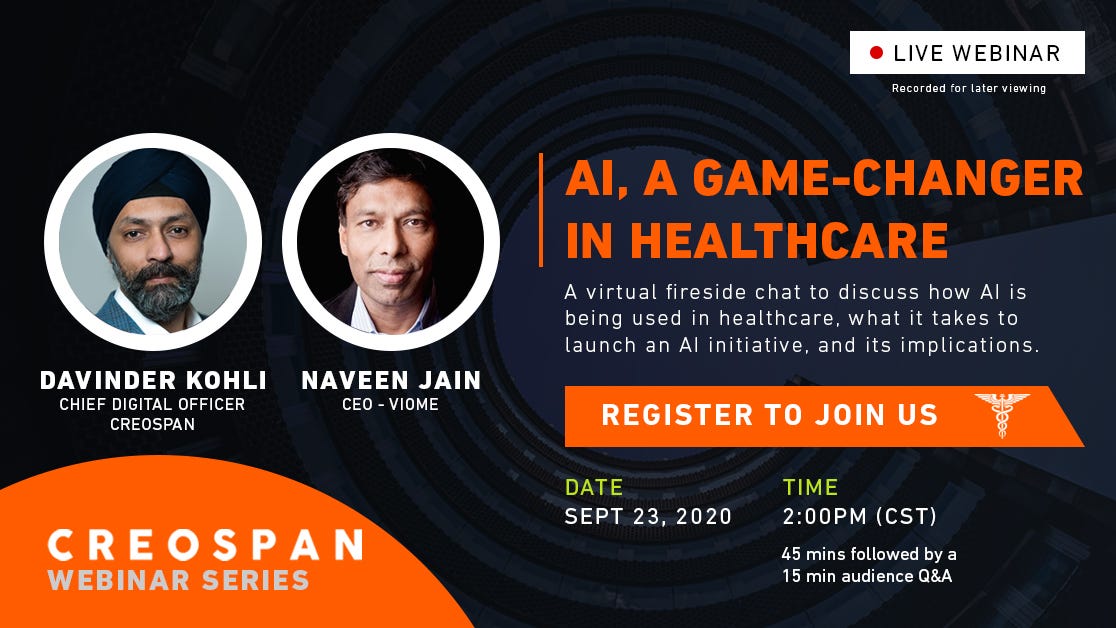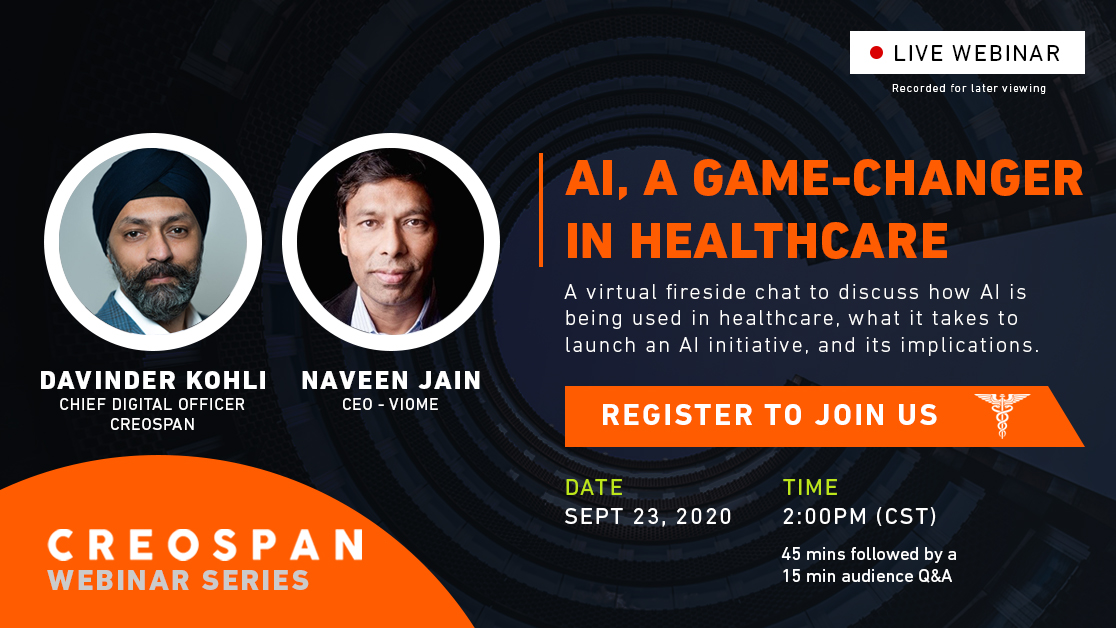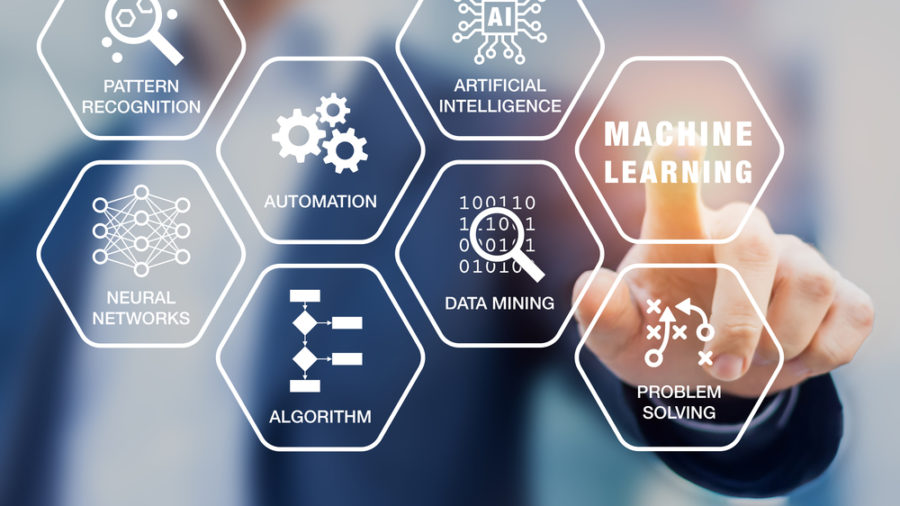
Level Up with Certifications
September 18, 2020Chronic Care Patient Monitoring using Artificial Intelligence
January 22, 2021Doing a gut check on AI
by Davinder Kohli
Growing up in an Indian household, I commonly heard that for a body to be healthy, its gut needs to be strong. To accomplish this, the emphasis was given to the types of food to consume and when they were to be eaten. For example, when preparing dishes such as spinach or cauliflower, garlic and ginger were added not only for enhancing the taste but for curbing any digestive flatulence. We were also specifically told not to consume fish with milk and to keep from eating watermelon at dinner.
While this advice is still prevalent and might have served me well, there is nothing scientific about it. Everyone’s body reacts differently to the same food and produces different glycemic levels depending on the microbiome in their gut. Microbiome is an ecosystem of trillions of microorganisms (bacteria, fungi, viruses) that live in our bodies. According to medical journals, the microbiome is even labeled ‘a supporting organ’ because it plays so many key roles in promoting the smooth daily operation of the human body.
In my recent webinar, I was fortunate to be in a virtual fireside chat with Naveen Jain, CEO of Viome, Inc., a precision health and systems biology company that offers services and health tests to help people understand their unique biology in areas like gut microbiome, cellular, and mitochondrial health. Analyzing the microbiome to understand the effect of foods that we consume is something the company does using artificial intelligence (AI) technology.

The focus of this talk was on what it takes to launch an AI initiative and the multidimensional challenges involved in bringing AI-based solutions to the market. Additionally, we discussed the risks of having autonomous systems with an unsupervised learning algorithm, finding the right talent, and the future of work. For those who cannot spend an hour going through the video, below are some of the key takeaways of my conversation with Jain.
–Data collection and modeling in AI
Collecting reliable data and its importance in constructing the right model with relevant parameters is an immense challenge in building AI systems. Jain advises checking the source, quality, and relevance of publicly available datasets before using that data for training AI models.
A better approach for organizations is to conduct their own survey, collect metadata and data, and test which of the collected metadata is applicable in the model. The data should be collected incrementally with a certain sampling size and then processed through the model. A feedback loop must exist in the AI system that enables data scientists to continually analyze the output of the model and accordingly adjust the input metadata, training datasets, and algorithms.
–Noise in data
There is a direct correlation between the number of features and the amount of homogeneous data to be collected. The higher the number of metadata elements in an AI model, the more data required. For example, if an AI model analyzes 1,000 features, collecting only 100 data records will not yield the right outcome. Jain suggests reducing the number of features if large amount of homogeneous data cannot be collected.
Additionally, collecting large amounts of data also reduces noise (use of irrelevant parameters). The randomness of certain parameters may seem large in a small dataset but might diminish when analyzing large datasets. Contrarily, what may seem like a random parameter might get amplified if that parameter seems to be persistent across larger datasets. Another noteworthy point is to use several models to validate the outcome rather than relying on the outcome of a singular model.
–Data biases and data privacy
Data models and algorithms are designed by fallible human beings. Of course, most of these systems are coded with the best intentions. Yet, intentionally or inadvertently, biases do exist in data, models, and algorithms. Jain advises against using a single person to code the algorithm or model. Models used by AI should not be presented as black boxes to the consumers, rather explained in terms of the parameters considered in producing the outcome.
When collecting personal data from consumers, either personally identifiable information (PII) or personal health information (PHI), the data should be encrypted and stored separately from the rest of the data to ensure Health Insurance Portability and Accountability Act or HIPAA compliance. However, a key differentiator for Viome, when it comes to data privacy, is that the company stores a person’s gene expression which is constantly changing. Therefore, getting access to that data would be futile for anyone outside the organization.
–The future of work
It is commonly debated that AI systems will eliminate many repetitive jobs in the future. While it is true that industrial revolutions result in manual jobs being taken over by automation, they create many more new jobs thereby producing higher throughput and enhanced productivity. Those who feel threatened by AI taking away their job should see it as an innovation that removes repetitive tasks and enables them to focus on the human experience.
On the flip side, finding talent to build AI systems is a challenge. Talented workers such as mathematicians, programmers, and data scientists are required. When I asked Jain how we can overcome this barrier, his response was that talent finds those who are solving big problems for human mankind. People want to work for companies that are audacious and solve challenging issues.
Bottom line: I hope you gained some new knowledge from my conversation with Naveen Jain, CEO of Viome. In many ways, AI is still a nascent technology that will eventually change the world. In fact, when I asked Jain about the future of AI, he was quick to respond with a witty comment that AI will become an acronym for Ancient Intelligence, and artificial intelligence will be the “new intelligence.”



